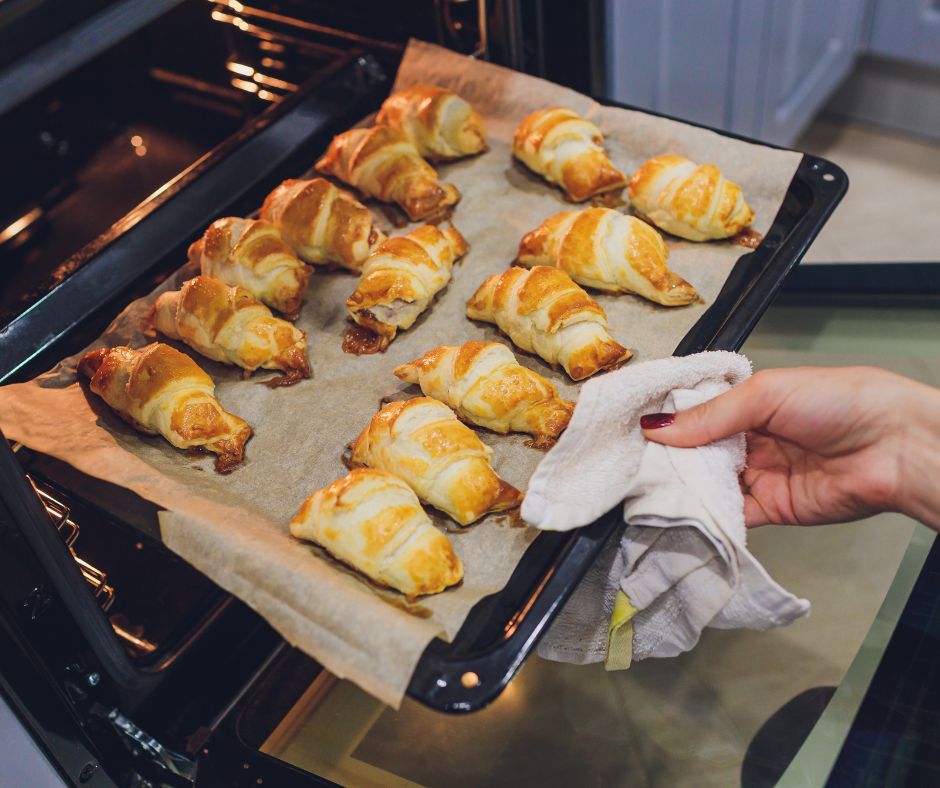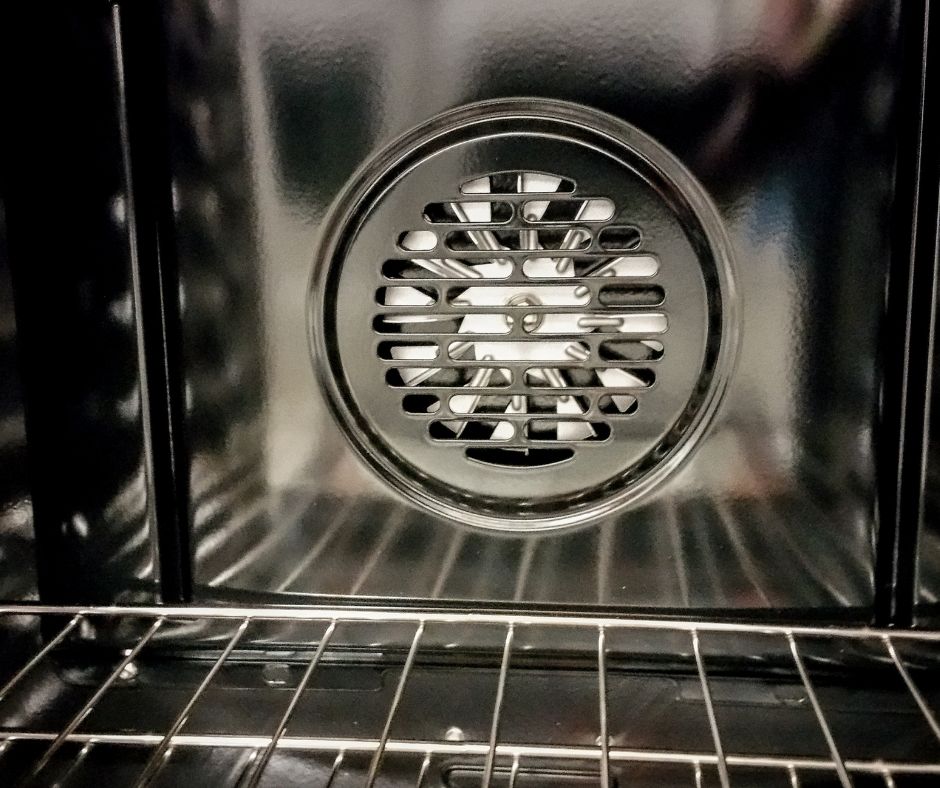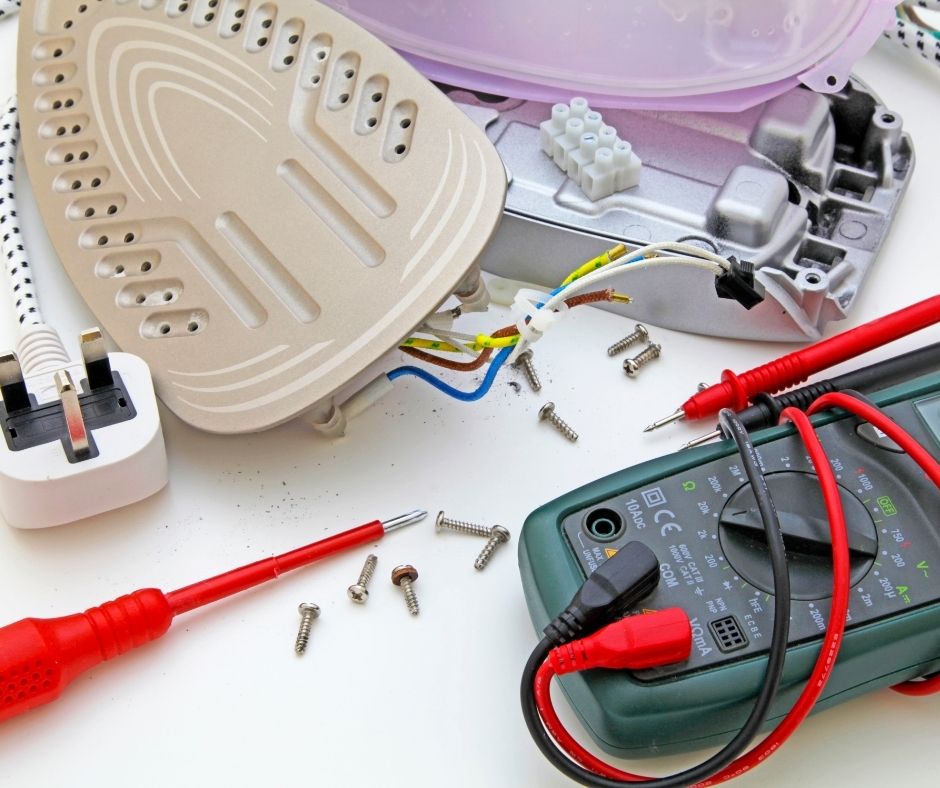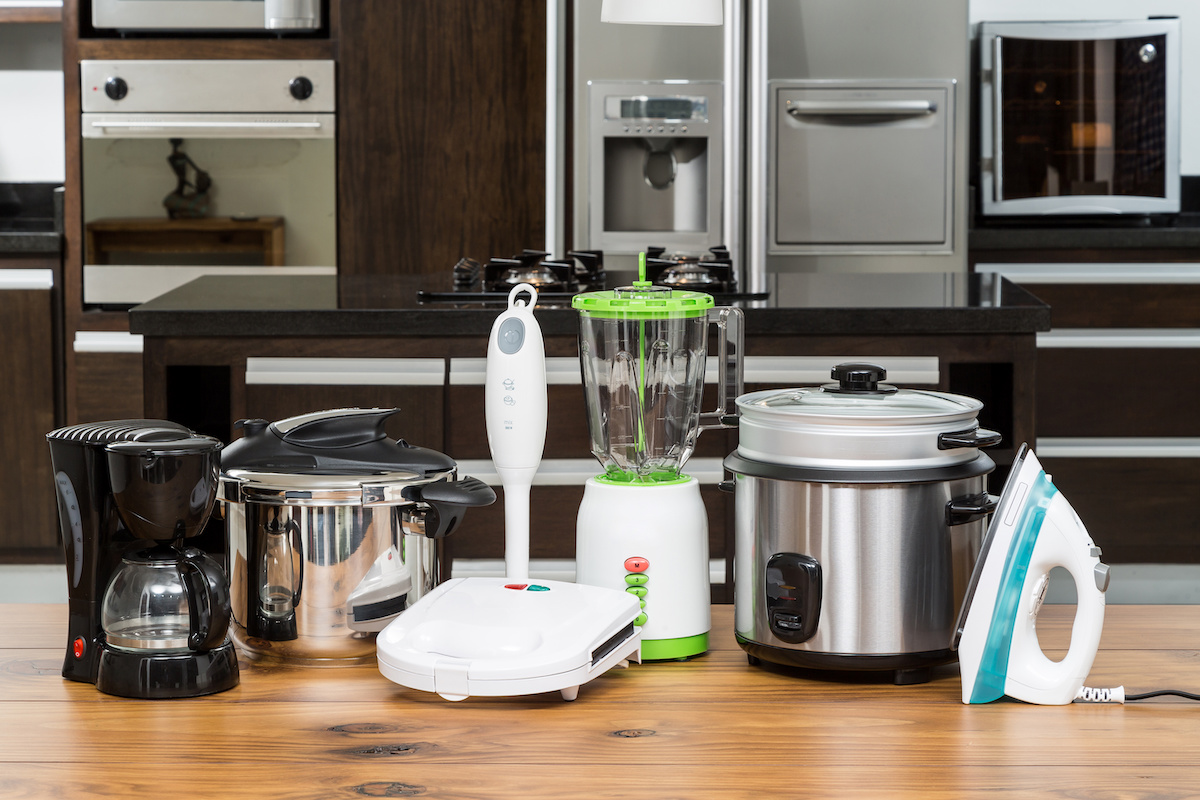
The Difference Between Conventional and Convection Ovens
You’re not alone if you are unaware of the difference between conventional and convection ovens. Many people don’t know what sets the two ovens apart. So, you’ve come to the right place.
Allow our knowledgeable team to guide you through the differences between the two. You’ll learn the advantages and disadvantages of both the conventional and the convection oven.
That way, if you want to buy a brand-new oven for your home, you can make the best decision. Or perhaps you are simply curious. Whatever the case, we have your back at Atlanta Appliance Services.
Continue reading to learn everything there is to know about the two types of ovens.
 Conventional Oven Inside
Conventional Oven Inside
What is a Conventional Oven?
Conventional ovens are more common to find in the average home. They are the traditional style of the oven, while convection ovens are more modern. This design has been around since William Hadaway’s first electric oven in 1896. When the convection oven was introduced almost a hundred years later, it was probably about time to bring a new heating method to the market.
Conventional ovens use two heating elements to heat the air inside the oven cavity. You can locate the heating elements at the top and bottom inside of your oven. In most cases, the base is used for cooking your delicious dishes, while the top is mainly used for broiling.
This system results in uneven heating of food. The dish or pan closest to the activated heating element will bake significantly faster than the ones further away. Many recipes ask you to place the food on the middle rack for the best results because of the placement of the heating elements.
Pros of a Conventional Oven
1 | You Don’t Need to Adjust Recipes
Unless otherwise noted, most recipes you find online or in cookbooks are written for conventional ovens.
2 | Perfect for Baking Certain Foods
Conventional ovens are excellent for cooking more delicate desserts and covered dishes. Here are some examples of what bakes well in traditional ovens:
- Cheesecakes
- Custards
- Rolls and sandwich bread
- Casseroles
- Muffins
- Cupcakes
- Souffles
3 | Familiar Function
As mentioned before, convection ovens are the traditional oven design. They are also commonly known as regular ovens or regular bake ovens. This style offers familiarity and simplicity in contrast to the newer convection ovens.
4 | More Affordable
Conventional ovens are less pricey than their counterparts. So, they are an excellent option for those on a tighter budget.
Cons of a Conventional Oven
1 | Longer Cook Times
One of the main differences between conventional and convection ovens is the time a dish will take to cook. Unfortunately, with regular ovens, you’ll experience longer cook times than with the alternative.
2 | Uneven Heating
Traditional ovens use a heating system that produces less even cooking. Luckily, this can be avoided by rotating the dish or pan halfway through baking. Otherwise, you’ll have a roast with bits of overcooked meat.
3 | Limited Capacity
With conventional ovens, you must be careful when using more than one rack at a time. One pan or dish will be finished much quicker than the other because it is closer to the heating element.
 Convection Oven Interior
Convection Oven Interior
What is a Convection Oven?
The convection oven was invented in 1967 and was mainly used by professional cooks and bakers until more recently. Now, many homes are equipped with this newer oven style due to the technological advances making it more affordable for at-home use.
The heating process is the primary difference between conventional and convection ovens. In contrast to regular ovens, the convection oven uses a fan and exhaust system that circulates the air inside the oven cavity. This produces more even baking and reduces the hot and cool spots created in a traditional oven.
Pros of a Convection Oven
1 | Even Cooking
With a convection oven, uneven results are a thing of the past! Enjoy perfectly baked dishes all the way through, absent of frustrating overcooked sections.
2 | Using Multiple Racks
Another difference between conventional and convection ovens that many people see as a huge advantage is that convection ovens produce better results when using more than one rack. This allows you to bake multiple batches of cookies for that big event coming your way.
Perhaps you have a birthday bash, graduation celebration, or retirement party for which to make hundreds of cookies. In that case, a convection oven is an incredible tool to have on your side. You can bake multiple batches at a time without compromising the quality and texture of your special homemade recipe everyone looks forward to.
Convection ovens are quite remarkable, but they have their limits. Be careful not to pack the oven too full of your sweet treats. It’s less efficient to stuff the oven to the top, producing unfavorable results.
3 | Reduced Cook Time
Cook quicker with a convection oven. Because of the air circulation, your delicious dishes will be finished a lot faster than when using a regular oven. Who doesn’t need a little extra time?
Plus, it preheats in a shorter time than traditional ovens.
4 | Produces Golden and Crisp Outsides
Another benefit of the heating process is the reduced moisture inside the oven cavity. This feature creates crisp, golden-brown surfaces for your culinary masterpieces. To get this effect with a traditional oven, extra butter or oil is used. However, when you have a convection oven at home, you can save your butter and oil for other uses.
The reduced moisture makes the convection oven ideal for cooking or baking the following foods:
- Cookies
- Pies
- Flaky pastries
- Crusty bread
- Roasted meats
- Roasted vegetables
5 | Energy-Efficient
Due to reduced cook times, the convection oven uses less energy than the traditional option. So, when choosing a convection oven for your home, you can expect its energy efficiency to reflect on your monthly utility bill. Over time, the reduced costs add up, making the convection oven a money-saver.
Not to mention, its reduced energy use is helpful for the environment, too. Currently, there are no Energy-Star-rated ovens on the market. So, if you’re searching for a way to save money and go green, a convection oven is a great choice!
Cons of a Convection Oven
1 | Adjusting Recipes
If you prefer to go by the book, a convection oven may not be the choice for you. As mentioned before, most recipes are written for conventional ovens. However, there are convection cooking books.
Plus, you can always adjust the recipe to work for your convection oven. The general rule is to subtract 25 degrees from the recommended temperature setting and multiply the suggested time by 0.75. For example, when the recipe calls for 25 minutes at 450 degrees, you’ll actually bake your dish at 425 degrees for a little over 18 minutes. Nevertheless, be sure to check on your food to ensure it’s cooking properly.
2 | Not Ideal for Certain Baked Goods
Not all foods cook well in convection ovens. Cakes and certain breads tend to rise too quickly and come out dry.
3 | More Expensive
The up-front cost of a convection oven will always be higher than its conventional counterparts. However, the savings on your energy bill may make the price tag well worth it.
Need Repairs or Installation Services for Your Oven?
Suppose you’re looking for a replacement for your current oven. In that case, you don’t need to hesitate on your purchase simply because of the worries of correctly installing the new oven. Allow Atlanta Appliance Services to take care of the installation! Call and make an appointment that matches perfectly with the day you plan on buying your new conventional or convection oven to get the job done right away! Furthermore, if your current or new oven doesn’t seem to be working properly, reach out to the trusted and skilled team at Atlanta Appliance. We will assess the situation and fix the problem in no time.



